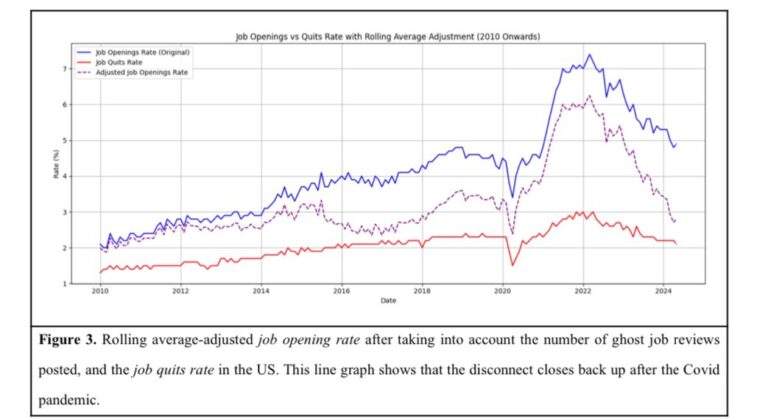Landing Your First Job: A 4-Step Guide for Applicants with Blank Resumes
Entering the workforce as a high school student or first-time job seeker can seem like a daunting challenge, especially when you’re brimming with enthusiasm but your resume is a blank slate.
This guide is designed to demystify the job search process, offering actionable advice and strategies to transform your blank resume into a compelling narrative of your potential.
Step 1 – Understand the Job Market Landscape

Identifying Approachable Job Opportunities
The first step in your job search is recognizing which roles are suitable for high school students. Typically, positions in retail, food service, or entry-level administrative tasks are more accessible.
These jobs provide a foundation for developing work ethics, customer service skills, and time management abilities. It’s crucial to set realistic expectations and understand that everyone starts somewhere, often not at the top.
Example: Mia, a high school junior, knew she couldn’t leap into her dream job in graphic design immediately. Instead, she looked for positions where she could hone related skills, such as a cashier at a local arts and crafts store.
This role allowed her to interact with products and customers passionate about art, laying a foundational understanding of retail and customer service.
The Importance of Presentation
Your appearance plays a significant role in making a positive first impression.
Opting for a neat, professional look with a button-front shirt and slacks or a modest dress can significantly impact how potential employers perceive you. Remember, the goal is to show that you take the opportunity seriously.
Example: When Alex decided to apply for a position at a local bookstore, he chose a smart-casual outfit over his usual skateboard attire.
His choice to wear a clean, pressed shirt and khaki pants instead of torn jeans and a graphic tee made a strong impression on the hiring manager, showcasing his respect for the interview process.
Step 2 – Mastering the Application Process

The Personal Touch
In today’s digital world, making a personal connection can set you apart. Visiting potential employers in person, preferably during off-peak hours, allows you to introduce yourself directly to the manager.
This approach not only demonstrates your initiative but also provides an opportunity to express your genuine interest in the business, beyond just needing a job.
Example: Sarah wanted to work at her favorite coffee shop. She visited the shop during a quiet period and introduced herself to the manager, expressing her admiration for their community involvement and her desire to be part of their team.
This direct approach, coupled with her enthusiasm, made her memorable, leading to a formal interview.
Dealing with Rejections
Rejection is an inevitable part of the job search process, but it’s also a learning opportunity. Handling rejections with grace and professionalism shows maturity and resilience—qualities that employers value.
Each rejection is a step closer to an acceptance, so maintain a positive attitude and keep moving forward.
Example: After several job applications, Jake received his share of rejections. Instead of getting discouraged, he viewed each “no” as a step closer to the right opportunity. He politely asked for feedback where possible, using it to improve future applications.
His perseverance paid off when he was finally offered a job at a local garden center.
Step 3 – Beyond the Job Search: Building Your Future

Valuable Experiences Outside of Employment
Consider engaging in internships, volunteer work, or joining organizations like the Peace Corps, Americorps or Conservation Corps.
These experiences not only enrich your resume but also demonstrate your commitment to personal growth and community involvement. They can provide both personal fulfillment and professional advantages.
Example: Nina knew that her ultimate goal was to work in environmental science, so she volunteered with a local river cleanup project.
This long-term commitment not only enriched her resume but also provided practical experience and demonstrated her dedication to potential employers.
Step 4 – Crafting Your Resume with No Experience
Crafting a resume from scratch might seem challenging, but it’s an opportunity to highlight your strengths, skills, and potential. Focus on academic achievements, volunteer work, personal projects, and extracurricular activities. Use action verbs and quantify achievements to demonstrate your impact and capabilities. Here is a step by step guide on crafting the perfect entry-level resume for 2024.
Example: When it was time to create his resume, Luis highlighted his leadership role in the school’s robotics club and his volunteer experience at the community library.
He focused on skills such as team collaboration, problem-solving, and time management, making a strong case for his employability despite his lack of formal job experience.
Ready to Transform Your Blank Resume?
Don’t let the challenge of having a blank resume deter you from pursuing your career goals. Wealth Waggle’s AI Career Coaches are here to guide you through each step of your job search journey.
From optimizing your resume to acing interviews, we provide personalized coaching tailored to high school students and first-time job seekers.
FAQs for the First-Time Job Seeker
Q1: What should I do if I have absolutely no work experience? Focus on highlighting skills gained through school, volunteer work, and extracurricular activities.
Emphasize qualities like reliability, eagerness to learn, and teamwork.
Example: Emily stood out by detailing her role as the captain of her school’s debate team, showcasing leadership, critical thinking, and public speaking skills.
Q2: How can I make a good impression during a job interview? A2: Dress appropriately, arrive on time, and prepare by researching the company.
Practice answering common interview questions and engage with the interviewer by asking thoughtful questions.
Example: Carlos researched the company’s history and asked insightful questions during his interview, showing genuine interest and initiative.
Q3: What are some common mistakes to avoid in my first job? A3: Avoid being late, neglecting to ask for help when needed, and resisting feedback. Embrace every opportunity to learn and grow.
Example: Jenna learned the hard way that ignoring feedback was a mistake. She quickly adjusted by actively seeking advice and improving her performance.
Q4: How can I balance work with school commitments? A4: Prioritize your schedule, communicate your availability to your employer, and use time management tools to ensure you stay on track with both responsibilities.
Q5: Is it important to have a professional email address for job applications? A5: Yes, a professional email address creates a positive impression and demonstrates your seriousness about the job search.
Avoid using casual or humorous email addresses.
Talk Resumes with Wealth Waggle
Perfect your resume with AI-assisted feedback and tips (using the latest recruiting intelligence).









